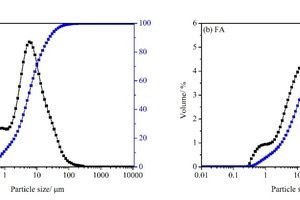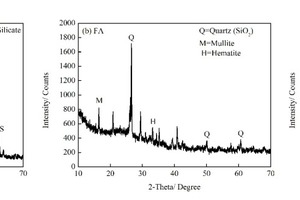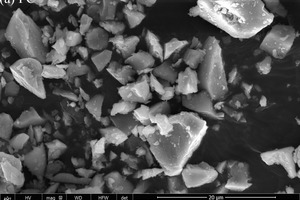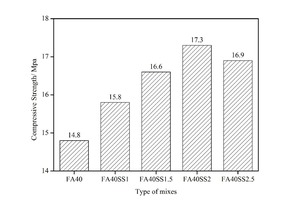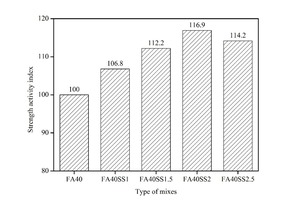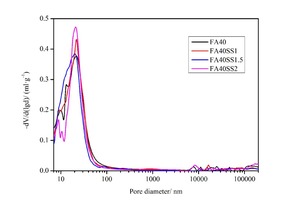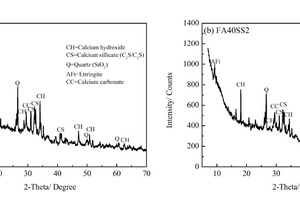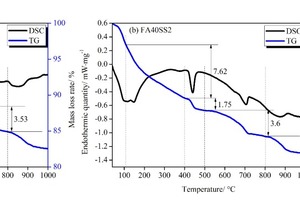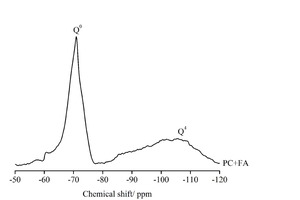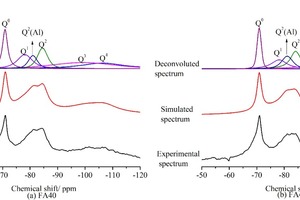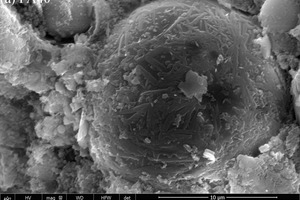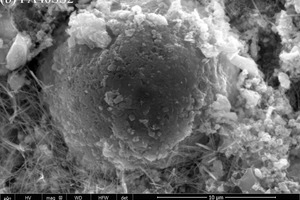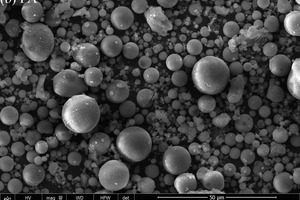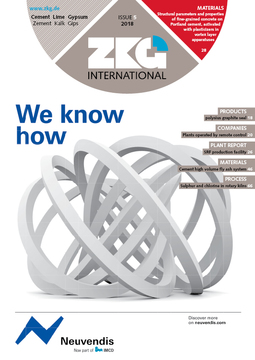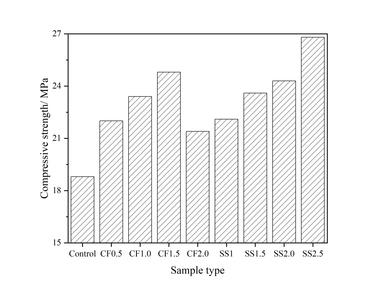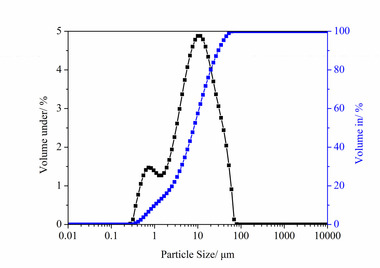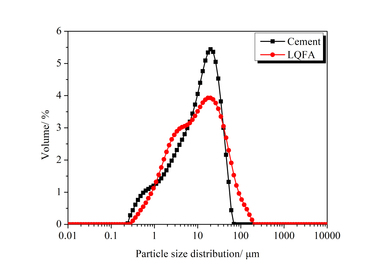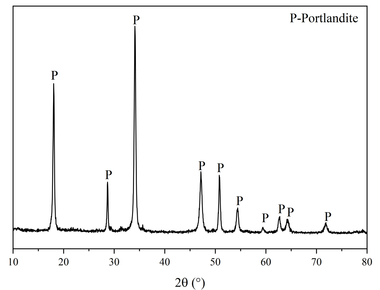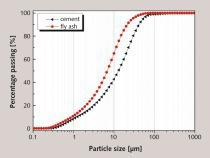Influence of sodium sulfate on hydration and microstructure of cement high volume fly ash system under steam curing
The influence of sodium sulfate (SS) addition on hydration and microstructure development of the cement high volume fly ash (CHVFA) system under steam curing is investigated in this paper. The compressive strength of CHVFA mortars was tested with different SS dosages. Results show that the addition of SS increases the strength obviously when its content is less than 2 %, and that further increase in SS content is not conducive to the development of strength. The mechanism of the positive effect of SS is analyzed by X-ray diffraction (XRD), differential scanning calorimetry-thermogravimetry (DSC-TG), scanning electron microscopy (SEM), mercury intrusion porosimetry (MIP) and nuclear magnetic resonance (NMR). The results reveal that SS incorporation accelerates the hydration of cement and fly ash, decreases the porosity and the content of calcium hydroxide (CH) and increases the polymerization degree of C-S-H, thus enhancing the compressive strength of mortars.
1 Introduction
Coal is the main source of energy in China, and in current and coming decades, it will still play the greatest role in the primary energy structure. Fly ash (FA) is the inevitable product of coal-fired power generation, and every 2 t of coal consumption can produce 1 t of FA. As recently as 2015, FA output in China reached an estimated 620 million t, i.e., the highest level in the world [1]. That is not only a great waste of resources, it also pollutes the environment, vitiates much farmland and affects the sustainable development of the industry when large amounts of solid waste...

